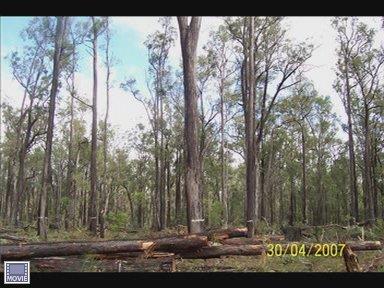In summer 2007, I planned and supervised the establishment of a research thinning trial in regrowth jarrah (E.marginata) forest about 15 km east of the Western Australian town of Jarrahdale. The trial consisted of eight plots, each one hectare in size, thinned to various densities of trees. The plots were established as part of the WA Water Corporation’s Wungong Research Catchment trial, to allow visitors to view and scientists to evaluate different thinning options. The plots were embedded within a larger area, about 120 ha, that was concurrently thinned by the Forest Products Commission as a commercial timber harvesting operation.
Some six months after thinning, in November 2007, the whole area was treated with a prescribed burn by the Department of Parks and Wildlife. The aim of the burn was to reduce the fuel hazard, including the additional fuels resulting from the thinning.
In late summer 2009, eighteen months after the prescribed burn, a wildfire started about three kilometres due east of the thinned area. The fire was reported by a passing motorist, fire crews were despatched from the Parks and Wildlife Jarrahdale HQ and, travelling along a bitumen road, they arrived at the fire within 20 minutes of the fire being reported. They found that the fire was burning in heavy fuels driven by a strong easterly breeze. The head-fire had already “crowned” (was burning through the tree-tops). There was nothing the crews could do about the head-fire, so they began work containing the flanks and tail-fire.
Due to the strong wind, the fire was arrow-shaped, long and narrow. It was headed like an arrow straight for Jarrahdale. Fortunately however, the head-fire entered the area that had been commercially thinned and prescribe burned 18 months earlier. Starved of ground fuel the crown-fire could not sustain itself and within 50 metres of the boundary the fire dropped to the ground. Here it became a mild ground-fire and was easily and rapidly contained by the firefighters.
Jarrahdale had dodged a wildfire bullet (or in this case, arrow).
I am sure there are many other such examples where responsible forest management has averted a costly wildfire disaster and possible loss of lives.
Frank Batini
March 2022

